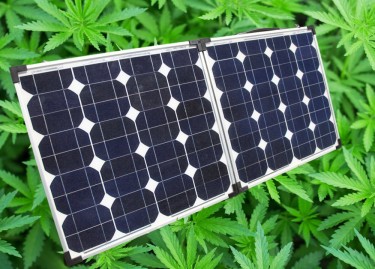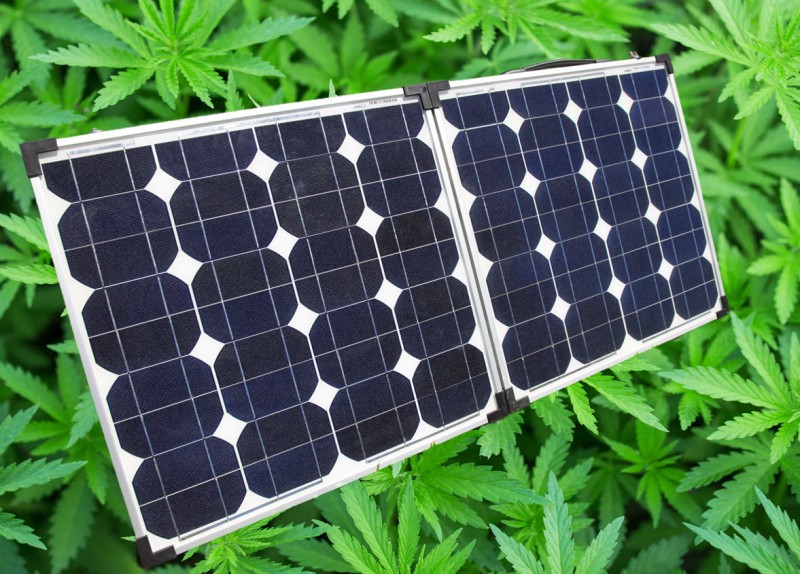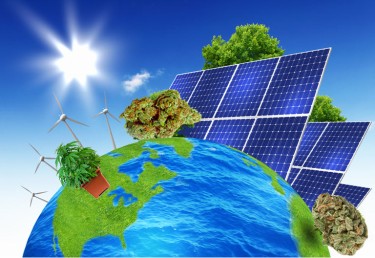
Indoor growing is an energy-intensive business. Approximately 1% of total U.S. electricity consumption is dedicated to cultivating indoor plants, and this figure is projected to rise to 3% by 2035. This significant energy use is due to the high demands of the equipment necessary to produce high-quality buds, which consumes around 13,000 kWh of electricity annually in a grow room of 3.5m³. Additionally, the continuous operation of this equipment to maintain optimal conditions for the plants generates a substantial amount of CO2. Specifically, creating one kilogram of buds emits 4.3 tons of carbon dioxide. The environmental effect of indoor cultivation has been impossible to fully quantify until recent reforms in marijuana legislation have allowed for greater openness. This new evidence clearly shows that indoor farming is not ecologically friendly.
The good news is that there are answers to these problems. One alternative is to relocate cultivation outside, relying on natural sunshine for illumination and wind for ventilation. However, this alternative is not viable for everyone, particularly in nations where marijuana production is still illegal and farmers must disguise their operations. Another potential approach is to employ solar panels, which uniquely harness the sun's electricity to lessen the environmental impact of indoor cultivation.
Exploring Solar-Powered Grow Room Setups
Solar-powered grow rooms are not a new concept. Historically, the main challenge has been cost efficiency. However, as solar panels become cheaper and more energy-efficient, this issue is diminishing. Another barrier to the adoption of solar-powered grow rooms is growers' unfamiliarity with such setups. Many growers prefer tried-and-true methods over experimenting with less-documented systems. The average grower has little room for experimentation, as failure could lead to crop and financial losses.
In the past eight years, the production of renewable energy sources has surged, largely driven by high production levels in China. Concurrently, technological advances have made renewable energy sources viable in more scenarios. However, the nature of solar energy presents challenges for powering the usual high-pressure sodium lights used in grow rooms, which require substantial power storage and space for batteries. Switching to LED or CFL lighting could alleviate some of these issues, but many experienced growers are reluctant to make such a switch overnight. A hybrid setup that utilizes both the grid and solar power offers an excellent solution, retaining many benefits of renewable energy while significantly reducing electricity bills.
For those committed to a fully solar-powered grow room, advancements in electricity storage offer hope. Modern batteries, capable of providing up to 10 kWh, can be charged by renewable energy sources or during off-peak hours for use during high-demand periods. These batteries can also be used in hybrid setups. They can be chained in sets of up to nine units, providing substantial power storage. A notable example of a high-quality solar battery is Tesla’s Powerwall, introduced to the market about a year ago.
The Financial and Environmental Benefits of Going Green
Switching to a fully green growing operation is a significant investment. A 10kWh Tesla battery, for instance, is not cheap and isn't readily available at local utility stores. Solar panels can also be costly, although prices vary by country. For example, if you need 2kW for a 0.6 by 0.6 meter grow room, and panels cost an average of $7 per watt, the total cost would be $14,000. This expense increases with the size of the room. Additionally, a Tesla battery costs around $3,500, and a single unit won't suffice.
However, it's important to note that this is a one-time expense. Once installed, the solar panels start paying for themselves. Maintenance costs are minimal, primarily involving occasional cleaning. The panels don't need to be replaced, and while they may lose about 0.5% efficiency per year, this is negligible. After 25 years, they still operate at around 80% of their original efficiency, and some even outperform their initial specifications. Batteries, on the other hand, will need replacing as their capacity degrades over time, becoming more noticeable after five years.
Although the initial investment may seem steep, the savings on electricity can offset these costs within a few years, depending on the size of the operation. The return on investment for a solar-powered setup can range from three to four years. As technology advances, this payback period is likely to shorten. Imagine not having to worry about electricity bills or the need for extra generators to avoid suspicion. Additionally, a reduced carbon footprint is an attractive benefit.
Creating a fully self-sustainable grow room requires careful planning, logistics, and a significant upfront investment. Growers with existing setups that do not use renewable energy might benefit from gradually transitioning to a green system, rather than making an abrupt change, which can be stressful, especially for larger operations. For those designing new setups, incorporating solar panels is a smart consideration. Self-sustainable grow rooms are undoubtedly the future of indoor cultivation.
Embracing the Future of Sustainable Cultivation
The transition to sustainable production techniques is more than simply a trend; it is an essential progression for the future of indoor farming. As environmental concerns increase and energy costs climb, including renewable energy sources such as solar panels in grow room setups becomes increasingly appealing. Solar technology provides a realistic solution for lowering the carbon footprint of indoor production, allowing high-quality plants to be grown while remaining environmentally conscious. The initial expenditure may be onerous, but the long-term rewards are significant. Growers may save significantly on energy expenditures, decreasing their reliance on conventional power sources. This transition also puts producers as pioneers in the push for greener farming techniques, which may help them improve their reputation and appeal to environmentally concerned customers.
Advances in solar technology and energy storage systems are making this shift more feasible. Modern batteries and efficient solar panels offer consistent energy, allowing gardeners to maintain ideal conditions for their plants without sacrificing quality. As these technologies advance, the hurdles to entry will lower, making it simpler for more farms to adopt sustainable methods. The transition to solar-powered grow rooms is a step toward a more sustainable and responsible future for indoor agriculture. Growers who engage in renewable energy may minimize their environmental impact, save operating costs, and contribute to a better planet. This forward-thinking strategy improves the environment while also ensuring the horticulture industry's long-term survival and profitability.
Bottom Line
Integrating solar panels into grow room setups is an important step toward sustainable indoor farming operations. Despite the upfront expenditures of acquiring solar panels and energy storage devices like Tesla's Powerwall, the long-term advantages are significant. Growers may save significantly on operational costs while also lowering their environmental effects by minimizing their dependency on conventional energy sources. As solar technology advances and becomes more cost-effective, producers will be able to employ renewable energy solutions, establishing them as pioneers in environmentally conscious agriculture. This transformation not only corresponds with global efforts to mitigate climate change but also boosts the indoor cultivation industry's resilience and profitability in the face of changing energy difficulties.






